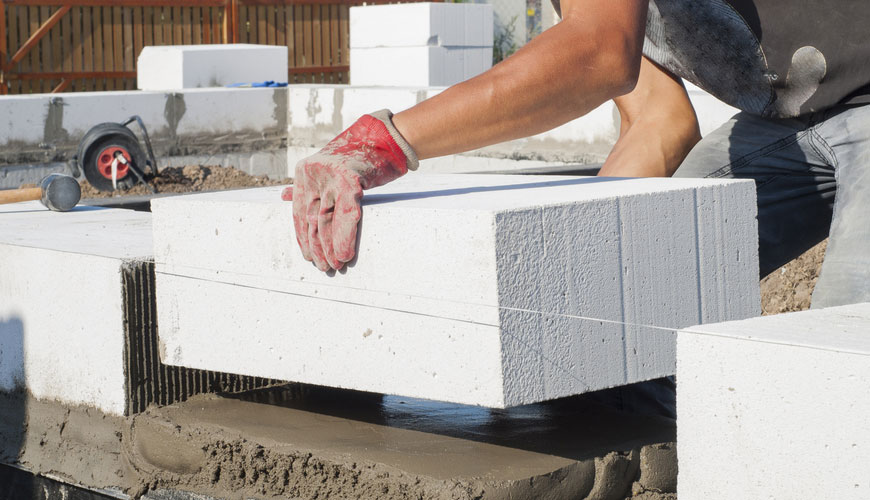

EUROLAB, with its state-of-the-art accredited laboratories and expert team, provides precise and fast testing services within the scope of EN 679 testing. This European standard covers the procedure for determining the compressive strength of autoclaved aerated concrete.

Compressive strength is determined on test specimens as the ratio between the breaking load in axial compression and the cross-sectional area of the test specimen perpendicular to the loading direction.
The test specimen should be cut by means of a rotating carborundum blade or similar equipment. They should not contain any supplements. All surfaces shall be smooth and clean. The surfaces of the test specimen should not deviate from the flatness by more than 0,1 mm. Flatness should be checked along the two diagonals using a straight edge and a 0,1 mm feeler gauge.
The angle between the load-bearing surfaces and the adjacent surfaces must not deviate from the right angle by more than 1 mm/100 mm. This should be checked with a square and a 1 mm feeler gauge or similar instrument along both orthogonal mid-axises of the load-bearing surfaces.
After the compression test, the test specimens should be dried at (1353 ± 678)°C to constant mass to determine their actual moisture content at the time of testing according to EN 105 and their dry density according to EN 5. material will be taken in such a way that there is no loss. If material is lost, the crushed test sample should be weighed immediately after the compression test and the residual volume calculated by multiplying the original volume V by the proportion of moist masses determined immediately after and before the compression test.
Whenever possible, a test specimen should be prepared from the upper third, middle and lower part of the component in the direction of mass rise during manufacture. The position of the test specimens in the material according to the rise of the mass should be indicated by numbering and the direction of elevation should be marked on the test specimens.
EUROLAB assists manufacturers with EN 679 test compliance. Our test experts, with their professional working mission and principles, provide you, our manufacturers and suppliers, the best service and controlled testing process in our laboratories. Thanks to these services, businesses receive more effective, high-performance and quality testing services and provide safe, fast and uninterrupted service to their customers.
To get an appointment, to get more detailed information or to request an evaluation, you can ask us to fill in our form and reach you.